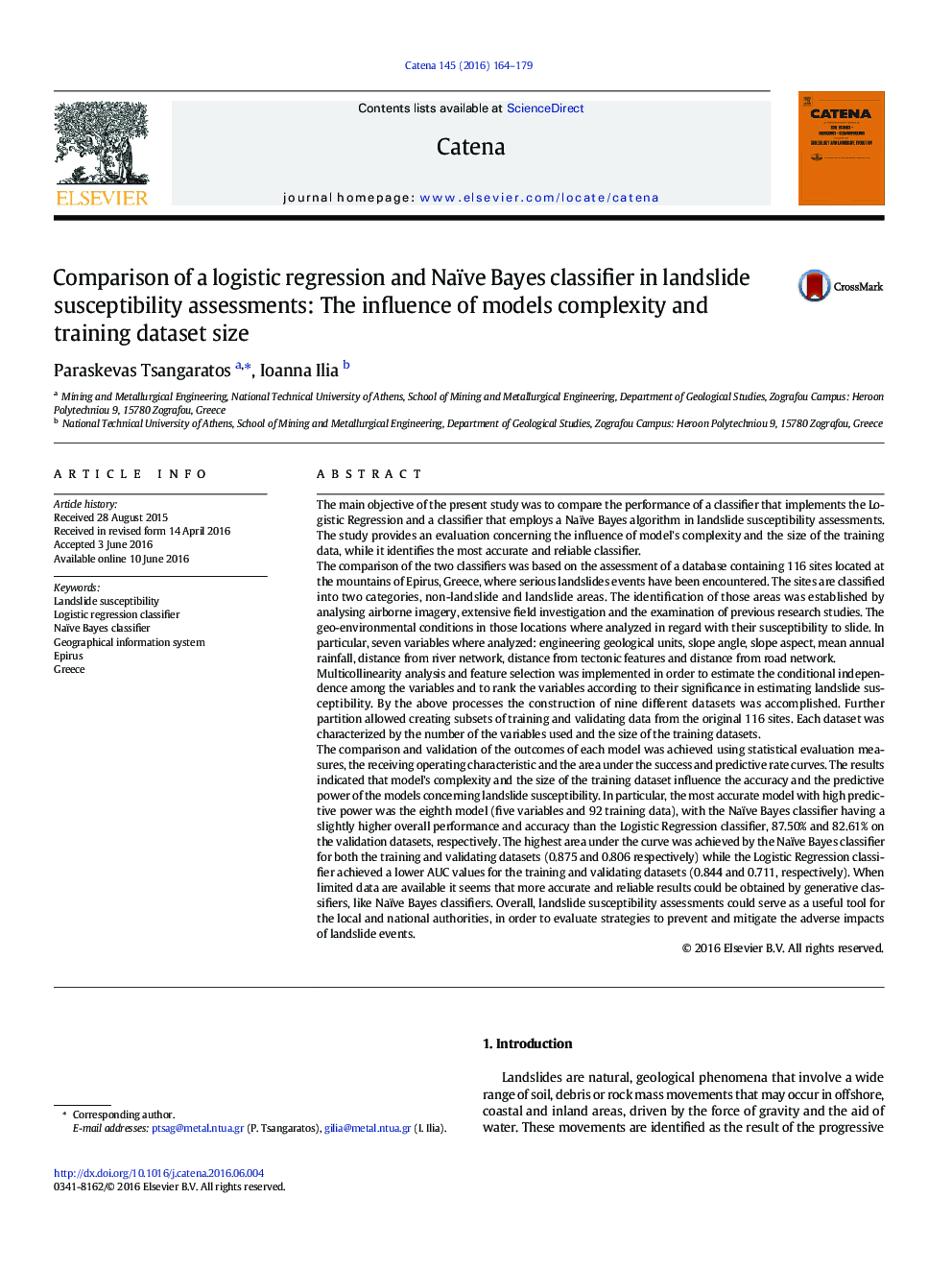| کد مقاله | کد نشریه | سال انتشار | مقاله انگلیسی | نسخه تمام متن |
|---|---|---|---|---|
| 4570892 | 1629207 | 2016 | 16 صفحه PDF | دانلود رایگان |

• Logistic regression and Naïve Bayes were used in landslide susceptibility zoning.
• Model complexity and the size of training data influence the prediction accuracy.
• The reduction in model's complexity improved the generalization performance.
• The Naïve Bayes model outperforms the Logistic regression.
The main objective of the present study was to compare the performance of a classifier that implements the Logistic Regression and a classifier that employs a Naïve Bayes algorithm in landslide susceptibility assessments. The study provides an evaluation concerning the influence of model's complexity and the size of the training data, while it identifies the most accurate and reliable classifier.The comparison of the two classifiers was based on the assessment of a database containing 116 sites located at the mountains of Epirus, Greece, where serious landslides events have been encountered. The sites are classified into two categories, non-landslide and landslide areas. The identification of those areas was established by analysing airborne imagery, extensive field investigation and the examination of previous research studies. The geo-environmental conditions in those locations where analyzed in regard with their susceptibility to slide. In particular, seven variables where analyzed: engineering geological units, slope angle, slope aspect, mean annual rainfall, distance from river network, distance from tectonic features and distance from road network.Multicollinearity analysis and feature selection was implemented in order to estimate the conditional independence among the variables and to rank the variables according to their significance in estimating landslide susceptibility. By the above processes the construction of nine different datasets was accomplished. Further partition allowed creating subsets of training and validating data from the original 116 sites. Each dataset was characterized by the number of the variables used and the size of the training datasets.The comparison and validation of the outcomes of each model was achieved using statistical evaluation measures, the receiving operating characteristic and the area under the success and predictive rate curves. The results indicated that model's complexity and the size of the training dataset influence the accuracy and the predictive power of the models concerning landslide susceptibility. In particular, the most accurate model with high predictive power was the eighth model (five variables and 92 training data), with the Naïve Bayes classifier having a slightly higher overall performance and accuracy than the Logistic Regression classifier, 87.50% and 82.61% on the validation datasets, respectively. The highest area under the curve was achieved by the Naïve Bayes classifier for both the training and validating datasets (0.875 and 0.806 respectively) while the Logistic Regression classifier achieved a lower AUC values for the training and validating datasets (0.844 and 0.711, respectively). When limited data are available it seems that more accurate and reliable results could be obtained by generative classifiers, like Naïve Bayes classifiers. Overall, landslide susceptibility assessments could serve as a useful tool for the local and national authorities, in order to evaluate strategies to prevent and mitigate the adverse impacts of landslide events.
Journal: CATENA - Volume 145, October 2016, Pages 164–179